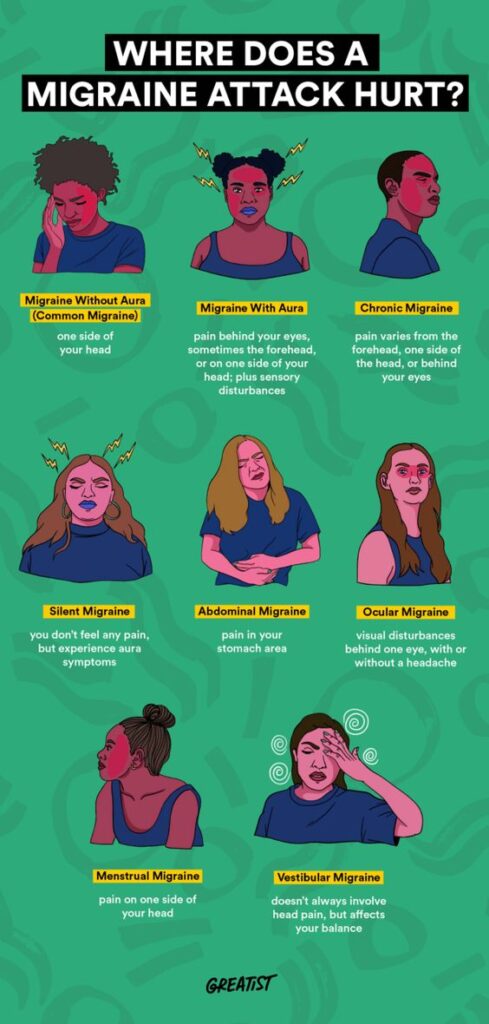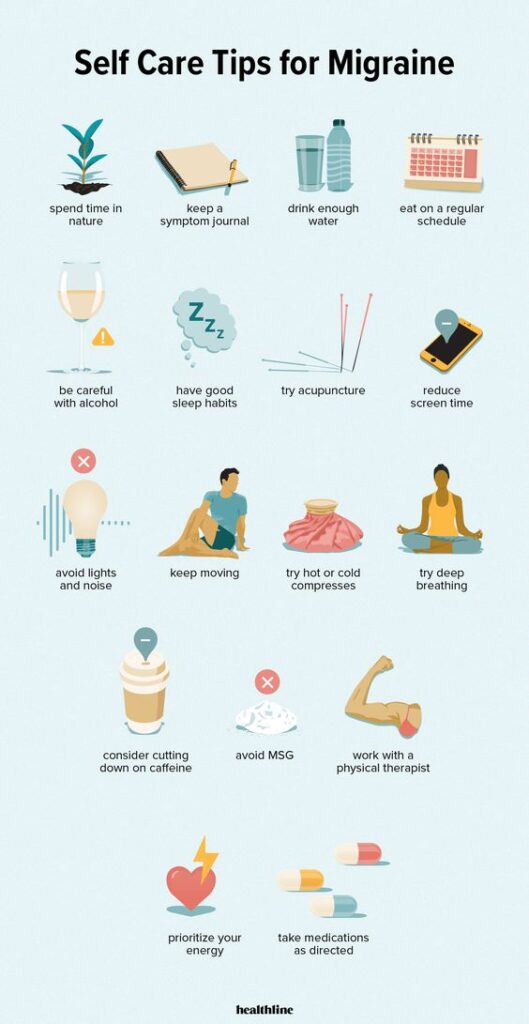Migraine is a complex neurological disorder that impacts more than 1 billion people woeldwide.
Though, what causes this, is still a question which is not resolved yet.
But there are some thoughts about it, like it can be the result of some kind of abnormal brain activity temporarily affecting nerve signals, chemicals and blood vessels in the brain.
There are several types of Migraine (from sources across the web);
- Migraine with Aura
- Migraine without Aura
- Chronic Migraine
- Hemiplegic Migraine
- Retinal/Ocular Migraine
- Migraine associated vertigo
- Abdominal Migraine
- Menstrual Migraine
- Status Migrainosus

Now let’s understand what is Aura
Aura is actually a warning sign. And there could be different signs for different person like dizziness, zigzag lines in your vision, sensitivity to light etc.
1. Migraine with Aura
These strikes usually before a attack usually happens. You may experience blind spots (scotomos), tunnel vision, zigzagging lines, flashing lights or coloured spots etc.
Although, these symptoms are not dangerous if it only relates to migraine aura.
However, these symptoms can also be a red flag in some serious health conditions, like a stoke. So, it’s better to keep an eye on your “aura” symptoms, and if something really seems abnormal or suspicious, you should seek medical help.
2. Migraine without Aura
It is the most common type, If you have this type of attack, you won’t get a warning signs that a attach is about to come.
3. Chronic Migraine
At this condition you experience frequent or long lasting episodes of headches for almost 15 days or more in a month.
4. Hemiplegic Migraine
This is a rare and serious type of. You can experience short-term trouble with muscle control and sensation, severe pain on one side of your head, loss of balance, dizziness, difficulty to speak, weakness or numbness on one side of your body (temporary paralysis).
5. Retinal/ocular Migraine
You experience repeated attacks of visual disturbance in one eye like falshing or sparkling lights, partial vision loss or blindness including a headache at the same time in this type.
6. Migraine-associated vertigo
Also known as vertibular migraine, you can experience a combination of vertigo, dizziness along with the sensitivity to light, sound and headache.
7. Abdominal Migraine
As the name suggests, it can cause you belly ache, instead of your head. They cause neusea, cramps and often vomiting. But this type accures more in kids (especially in girls) more than boys.
They may loose there appetite, have dark shadows under their eyes, be pale or less energetic.
The pain either go in some hours or it can take several days to go.
8. Menstrual Migraine
It starts before or during a woman’s period. But it doesn’t happen with every woman or every single period. The natural drop in estrogen levels before your period starts is might be the reason of it.
The common symptoms are a dull throbbing or severe pulsing headache, sensitivity to light, nausea etc.
9. Status Migrainosus
It’s a rare and very severe type of attack, in which the headache lasts longer than 72 hours. It doesn’t respond to uaual medicines or treatment as well. These types of attacks can be severe sometimes, that you might end up visiting to the hospital.
So, apart from the medical treatment, here are some of the self-care tips to help you out

- First of all, you need to drink sufficient water. Water actually helps to balance a lot of health issues in your body.
- Avoid caffeinated drinks like coffee and tea.
- Quit Smoking.
- Stress can be a huge trigger too. So, try to avoid stress.
- Try meditation on a regular basis.
- Avoid high light and noisy areas.
- Regular exercise can also be very helpful. It acts as an effective non-pharmacological intervention to decrease attacks.
- Reduce your screen time.
- Have good sleep habits.
- Spend a good time in nature. Try gardening.
- Avoid MSG (Monososium Glutamate).
These are some of the things which are in our hands to help us better to deal with it. But, you should always consult a doctor if you start developing any kind of symptoms.
Hope this helps.
Till than, you can also check out about Hiccups – What is it ? with Some Common Solutions.

Happy Health 🙂
